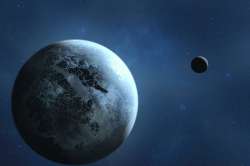'Super-Earth': In quest for the extra-terrestrial, researchers find Earth-like conditions on planet 111 light years away
Researchers found that the K2-18b is probably mostly rocky with a gaseous atmosphere – like Earth, only bigger.

In a significant breakthrough in man’s relentless search for life beyond Earth, a new research claims to have found a planet that could host alien life.
Located 111 million light years away, the planet known as K2-18b has been described as a potential ‘Super-Earth’ - a large rocky planet capable of supporting life.
The study, conducted by researchers at the University of Texas, Scarborough, and University of Montreal, Canada, using data from the European Southern Observatory (ESO), has found K2-18b orbiting at a habitable distance from its star, making the presence of water on the planet. Water, as we know it, is a key component for the possibility of life.
As fascinating as this discovery that hints at the possibility of intelligent life beyond our blue ball may sound, the researchers also managed to locate another planet that neighbours the K2-18b, called K2-18c.
“Being able to measure the mass and density of K2-18b was tremendous, but to discover a new exoplanet was lucky and equally exciting,” said Ryan Cloutier, a PhD student in University of Toronto Scarborough’s Centre for Planetary Science.
Using data coming from the High Accuracy Radial Velocity Planet Searcher (HARPS) which used the ESO's 3.6-metre telescope at La Silla Observatory in Chile, the researchers found that the K2-18b is probably mostly rocky with a gaseous atmosphere – like Earth, only bigger.
The researchers, however, did not rule out the possibility of the planet being mostly water with a thick layer of ice.
“With the current data, we can’t distinguish between those two possibilities,” said Cloutier. “But with the James Webb Space Telescope (JWST), we can probe the atmosphere and see whether it has an extensive atmosphere or it’s a planet covered in water.”
As for the neighbouring planet K2-18c, the researchers concluded that it was quite close to the sun and therefore uninhabitable due to high temperatures, but like the K2-18b it is also a Super-Earth.
Study co-author Professor René Doyon, also from the University of Montreal, added: “There's a lot of demand to use this telescope, so you have to be meticulous in choosing which exoplanets to look at.
“K2-18b is now one of the best targets for atmospheric study, it's going to the near top of the list."